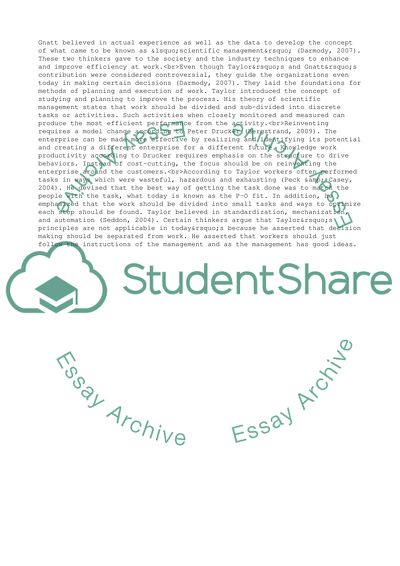Cite this document
(Henry L. Gantt and Frederick Taylor: Reinventing Enterprise Assignment, n.d.)
Henry L. Gantt and Frederick Taylor: Reinventing Enterprise Assignment. Retrieved from https://studentshare.org/business/1726622-what-contribution-have-the-leading-management-thinkers-made-to-improving-efficiency-at-work
Henry L. Gantt and Frederick Taylor: Reinventing Enterprise Assignment. Retrieved from https://studentshare.org/business/1726622-what-contribution-have-the-leading-management-thinkers-made-to-improving-efficiency-at-work
(Henry L. Gantt and Frederick Taylor: Reinventing Enterprise Assignment)
Henry L. Gantt and Frederick Taylor: Reinventing Enterprise Assignment. https://studentshare.org/business/1726622-what-contribution-have-the-leading-management-thinkers-made-to-improving-efficiency-at-work.
Henry L. Gantt and Frederick Taylor: Reinventing Enterprise Assignment. https://studentshare.org/business/1726622-what-contribution-have-the-leading-management-thinkers-made-to-improving-efficiency-at-work.
“Henry L. Gantt and Frederick Taylor: Reinventing Enterprise Assignment”, n.d. https://studentshare.org/business/1726622-what-contribution-have-the-leading-management-thinkers-made-to-improving-efficiency-at-work.


